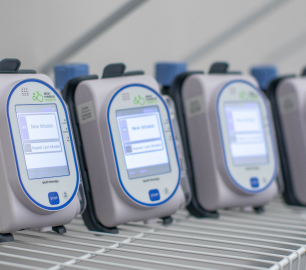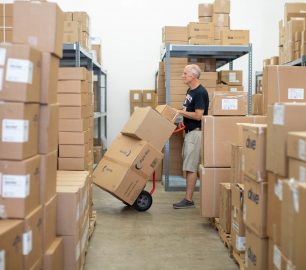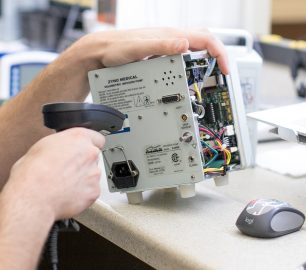Keeping Your Infusion Equipment Patient-Ready
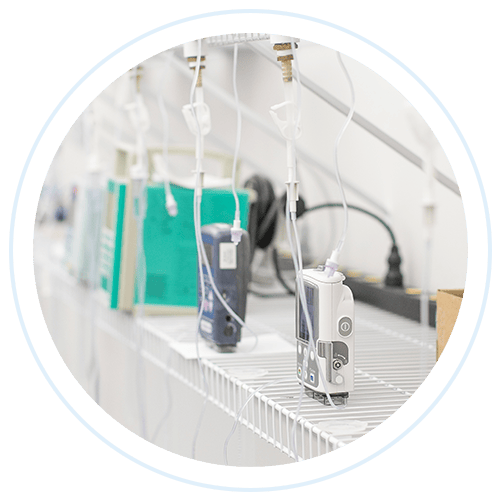
Whether you participate in at-home infusion therapy or out-patient infusion therapy, keeping your infusion equipment and spaces clean is imperative for the success of your operation.
Hazardous materials involved in infusion therapy such as medicinal compounds or bodily fluids contaminate equipment upon contact rendering it unfit for patient use. Because of this, all infusion equipment should be cleaned, disinfected and returned to their manufacturer’s standards before being reused or reassigned.
As mentioned above, it is necessary to both clean and disinfect your equipment before it is safe to return, reuse or reassign, so understanding the difference between cleaning and disinfecting is essential.
Cleaning vs. Disinfecting
In day-to-day life, the terms “cleaning” and “disinfecting” are commonly used interchangeably, but in the medical world, the actions have drastically different definitions.
Cleaning, as defined by the U.S. Center for Disease Control (CDC), is, “the removal of foreign material (e.g., soil, and organic material) from objects and is normally accomplished using water with detergents or enzymatic products.”
Disinfecting, according to the CDC, “kills most germs on surfaces and objects and is usually done with stronger bleach solutions or chemicals.”
Cleaning is the process that occurs first, as you cannot kill germs by disinfecting while there are still foreign materials clinging to a surface. Once you have removed the surface level dirtiness that is visible to the eye, a more intensive disinfecting process involving bleach or chemicals will ensure that your equipment is free from harmful contaminants.
When it comes to cleaning, not all detergents are fit for the same surfaces and contaminants, so it’s important to determine which agent will be able to resolve your issue before you can prepare for the disinfecting stage.
Detergents that are alkaline or basic are more effective at fighting grease and oils, while acid-based detergents are more fit for removing mineral deposits and oxidation from surfaces.
Here is a noncomprehensive list of cleaning and disinfecting agents that can be used to rid your infusion equipment of contaminants:
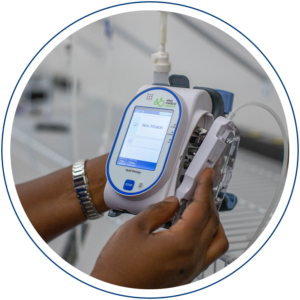
PDI Super Sani-Cloth
Madacide (MADA Medical)
Virex II (Johnson Wax)
Coverage Spray and Coverage HB Plus (Steris)
CaviCide (Metrex)
Quik Fill Compac (A-456-N) (Airkem)
Virex II 256
Klor DeTM (Chlorine tablets)
Dispatch (Clorox)
Benzalkonium chloride concentrate (.13%)
Glutaral concentrate, USP (2%)
10% solution of household bleach (1 part bleach to 9 parts water)
Alcohol, USP (93%)
Isopropyl alcohol, USP (99%)
Chlorhexidine gluconate (4%)
Not all agents can be used in every situation. Some manufacturers have specific cleaning and disinfecting standards that need to be double-checked to ensure safe and effective cleaning and disinfecting practices.
Disinfecting your surface or equipment requires more careful attention to detail than cleaning. Most disinfectants come equipped with directions that explain the intended use of the product, surfaces on which it can be used, the length of time disinfecting needs to occur to be successful (contact time) and how to store the product when not in use. Another crucial detail to remember while disinfecting is the personal protective equipment (PPE) recommendations included in the instructions of the product; PPE recommendations should always be followed to avoid any negative reactions of the disinfectant.
Accurately following the disinfectant instructions is the only way to ensure proper and safe usage of the equipment in the future.
Cleaning and disinfecting processes should be reviewed and revised as new equipment or contaminants work their way into your infusion environment. When in doubt, always refer to the manufacturer of your equipment or cleaning agent for best practices to maintain a safe and healthy infusion therapy operation.
